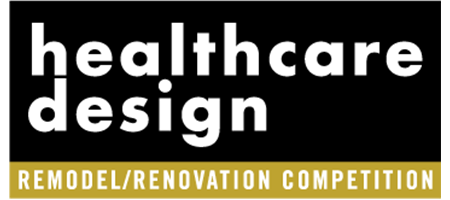
Angela Mazzi (Headshot credit: Courtesy of GBBN)
Healthcare Design’s 2025 Healthcare Design Industry Predictions series continues with Angela Mazzi, principal at GBBN (Cincinnati, Ohio).
Here, Mazzi discusses some of the opportunities and challenges she sees for 2025, including bold strategies on resiliency and climate change as well as a shift toward value-driven patient experiences.
Healthcare Design: Where do you think the healthcare design industry will head in 2025?
Mazzi: It’s time to be bold about strategies for market, regulatory, and climate reasons. Healthcare organizations that try to maintain the status quo won’t survive.
Risk analysis and understanding the return on investment of resilience will become increasingly important in the face of adverse climate events. Arup Americas’ (New York) Adaptation and Resilience Leader Ilana Judah is doing some great work to build models that look at the savings of damage avoidance.
The Office of Climate Change and Health Equity at the Department of Health and Human Services just issued its Climate Resilience for Health Care (CR4HC) toolkit. The toolkit provides strategies for mitigation, preparedness, response and recovery. Because socioeconomically disadvantaged populations are most vulnerable to extreme climate, this will also bring more focus to community partnerships and health equity strategies.
On a different note, I also think that research breakthroughs leading to more personalized medicine will increase the need for specialty pharmacies. This may be a centralized facility or satellite pharmacies located within departments.
HCD: What’s the biggest opportunity for change in the new year?
Mazzi: Human factors and user experience are emerging as an important area of focus. This is because of consumer consciousness and the need to address burnout and safety issues that have led to a clinician shortage.
While a lot of attention has been paid to the issue of burnout, the work environment factors that lead to it not just operational strategies need a much bigger spotlight.
HCD: Do you think the new administration’s policies will affect construction prices and labor—how? If so, what impact will that have on the healthcare design sector?
Mazzi: We will see a loosening up of supply chain backups that have impacted availability and cost of materials. I also expect the price of fuels to lower, which will reduce costs to transport materials for manufacture and delivery to the job site.
While the threat of tariffs may have a short-term impact on some prices, that will probably balance out as domestic production increases.
HCD: How do you anticipate the aging baby boomer population will impact the industry?
Mazzi: The need to cater to generational preferences will lead to more customizable care that has a greater focus on patient engagement and remote monitoring of vitals. This means shifting from a transactional encounter to one that is a value-driven experience that engenders patient loyalty to the health system.
Artificial intelligence tools will make this an easier transition and add to an organization’s value stack. Healthcare delivery models will shift to more home-based and portable care portfolios. Advanced analytics and clinical decision support tools will become a necessary investment. This population segment is still the core segment of the patient population for both chronic and complex care.
For more insights from industry leaders, read here.











